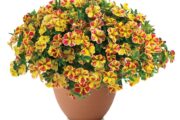(BPT) – When you picture a retaining wall, do you imagine it holding back dirt? That’s the most common use for retaining walls – to address elevation changes and prevent erosion. But concrete segmental retaining wall (SRW) units are multi-purpose landscaping tools with many more uses.
Site planners, engineers, landscape architects, designers, developers and builders have long relied on SRWs to manage sloping properties, provide more usable space, or create stadium seating. Homeowners, too, have discovered retaining walls can be used to create functional outdoor features, says Scott Arnold, manager of Villa Landscapes in St. Paul, Minnesota.
“Because segmental retaining walls are both durable and beautiful, landscapers and homeowners can use them to create outdoor seating, raised patios and other features,” says Arnold. “They are the perfect building block to create grill islands, outdoor kitchens and so much more.”
Most SRWs are easy to install, which is an important consideration for both landscape professionals and do-it-yourselfers, Arnold said. With retaining wall systems, homeowners and landscapers can create freestanding walls, seat walls, columns, stairs, planters and other features without the need for special units.
Stunning seating
While commercial installers often use SRW units for amphitheater and stadium seating, retaining walls can also be used to create beautiful and durable outdoor seating on a smaller scale, from freestanding walls that double as seating, to two-tiered seat walls. VERSA-LOK SRWs can be used to easily create a curved “couch” seating area that works well as a solution around a patio and fire pit for fall evenings.
Ditch the deck
Raised patios built with retaining wall units are a low maintenance option to replace aging wooden decks that require continual maintenance. Villa Landscapes designed a raised deck replacement in Minnesota with SRWs from ground level to 42-inches tall to support a paving stone patio. Stairs also built with SRWs connect the patio to the home and yard.
The result was a beautiful, spacious and low-maintenance patio with the added advantage of a clear view of the backyard. Willow Creek Paving Stones pavers were used for the patio, surrounded with a contrasting course of river rock that serves as a visual and physical boundary as well as a space for potted plants.
Create curb appeal
Where the yard meets the driveway, retaining walls can be installed as a barrier to protect the lawn from damage caused by tire tracks, plowing or deicing. A tiered arrangement that addresses a slope in the yard adds space for plants and shrubs. Freestanding walls are often built along property lines on corner lots to prevent unwanted traffic from cutting across the yard.
Columns created using retaining wall units can be paired with any style home, from classic to contemporary, to add curb appeal. When the front entryway is freshened up with seat walls and other features, the space functions like an old-fashioned porch for visiting and other outdoor activities.
A place for plants
Tree rings and planters built with retaining wall units create a tidy solution around hard-to-maintain areas, such as shallow-rooted trees and other problem spots. Planters and tree rings can function as usable space for perennials, annuals, vegetables and herbs. SRWs such as VERSA-LOK can be used to create planter walls up to 4-feet tall without the need for geogrid reinforcement. VERSA-Green, a plantable wall system that mimics a hanging garden, provides a stunning living wall solution.
Build a backyard
A homeowner in Apple Valley, Minnesota, nicknamed her unmowable back yard “Billy Goat Hill” because there was no yard space and no safe way to access her garden and fire pit at the top. Plus, erosion was a continual problem.
Devine Design Landscapes of Rosemount, Minnesota, solved the problem by excavating for a small back yard and creating tiers of retaining walls with offset stairs, patio landings and seat walls. The result was a small, usable backyard space with safe access to the hilltop and ample planting space for perennials.
“With VERSA-LOK, I could use the same block to build the retaining walls, steps and seat walls,” says Paul Devine, owner of Devine Design Landscapes. “The pinned system provides a high ratio of weight per square foot of wall face plus extreme flexibility in design. Back-locking lip walls are not as structurally sound as a pinned system, and hollow blocks do not provide the stability required for large tiered walls.”


